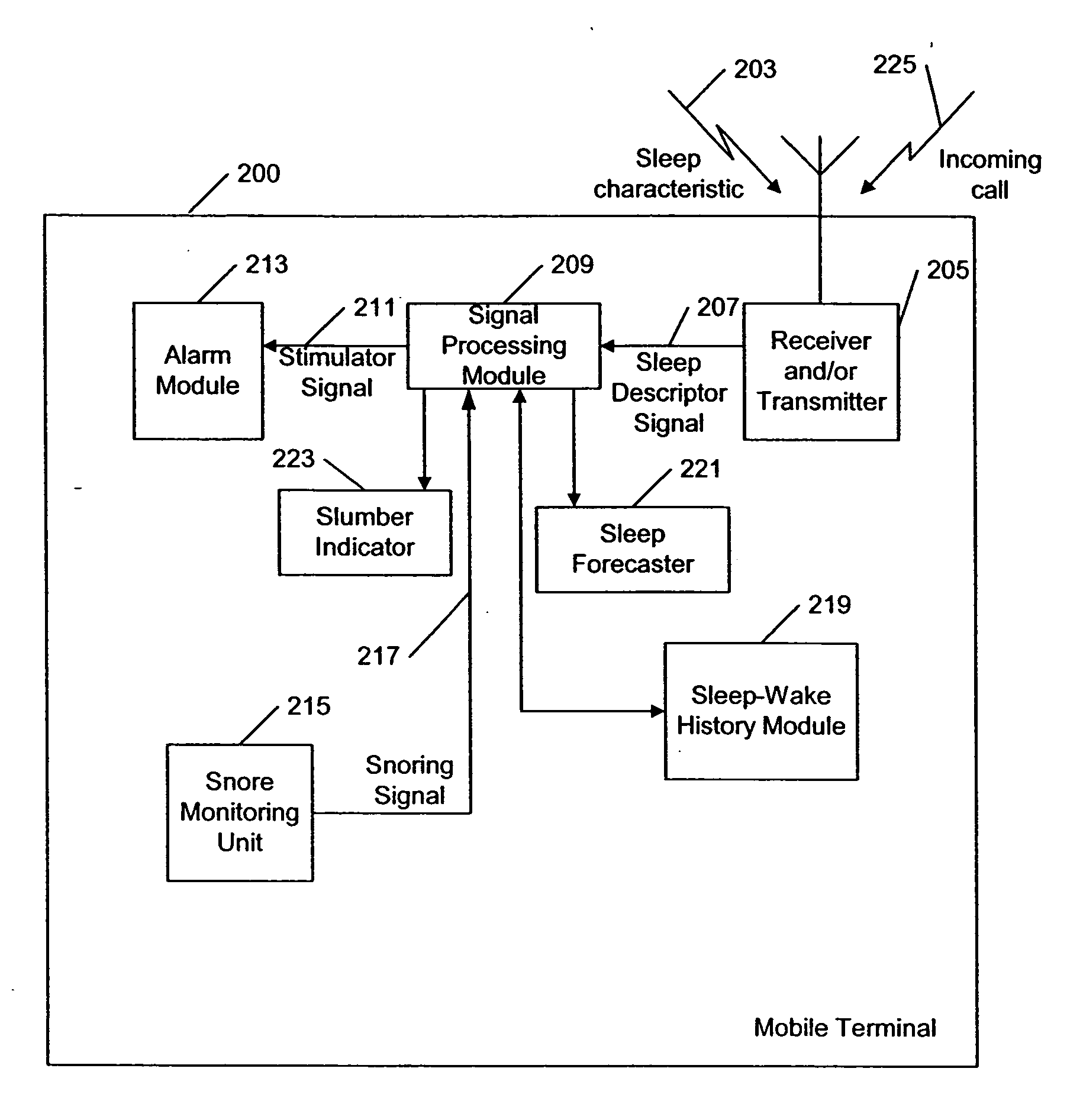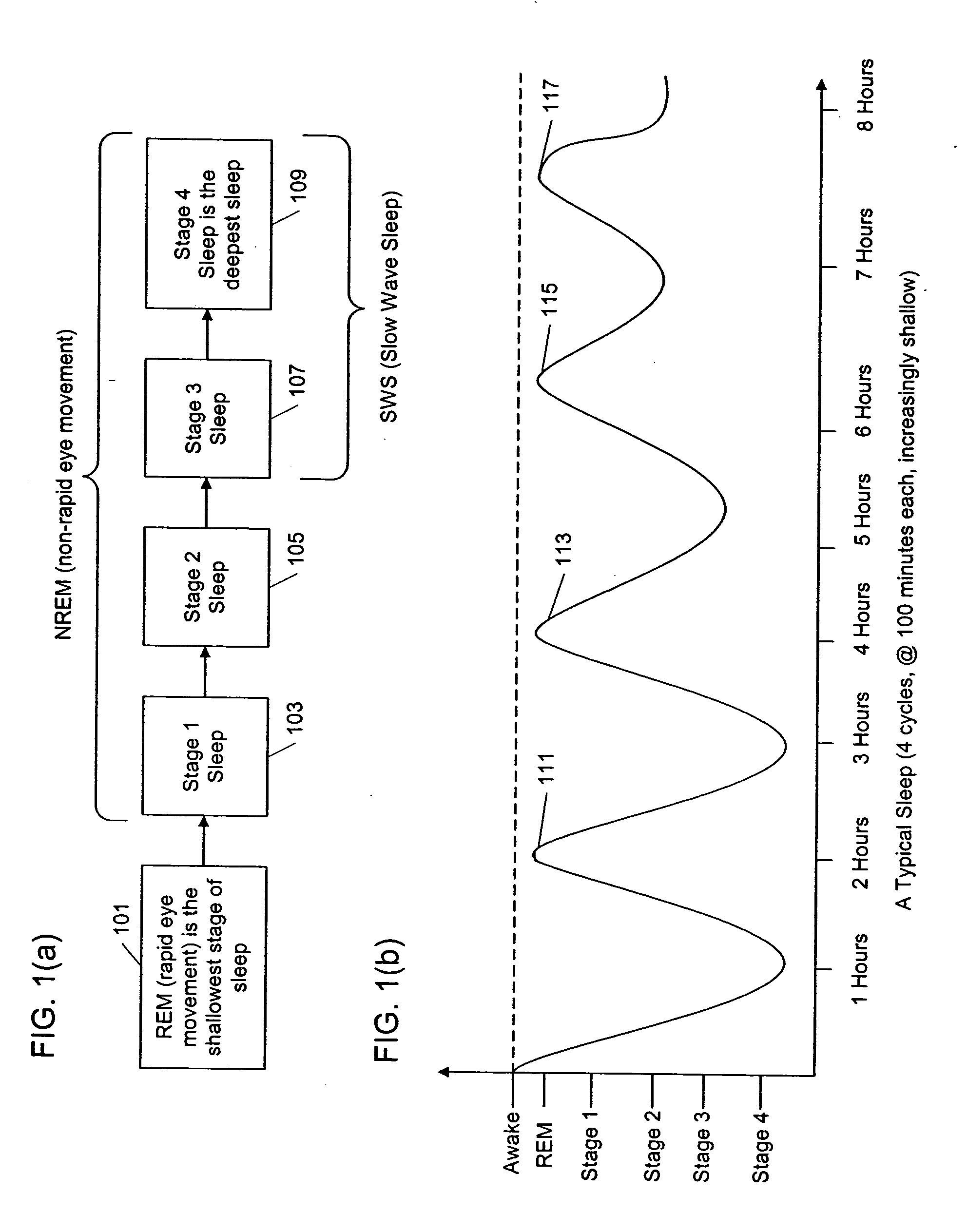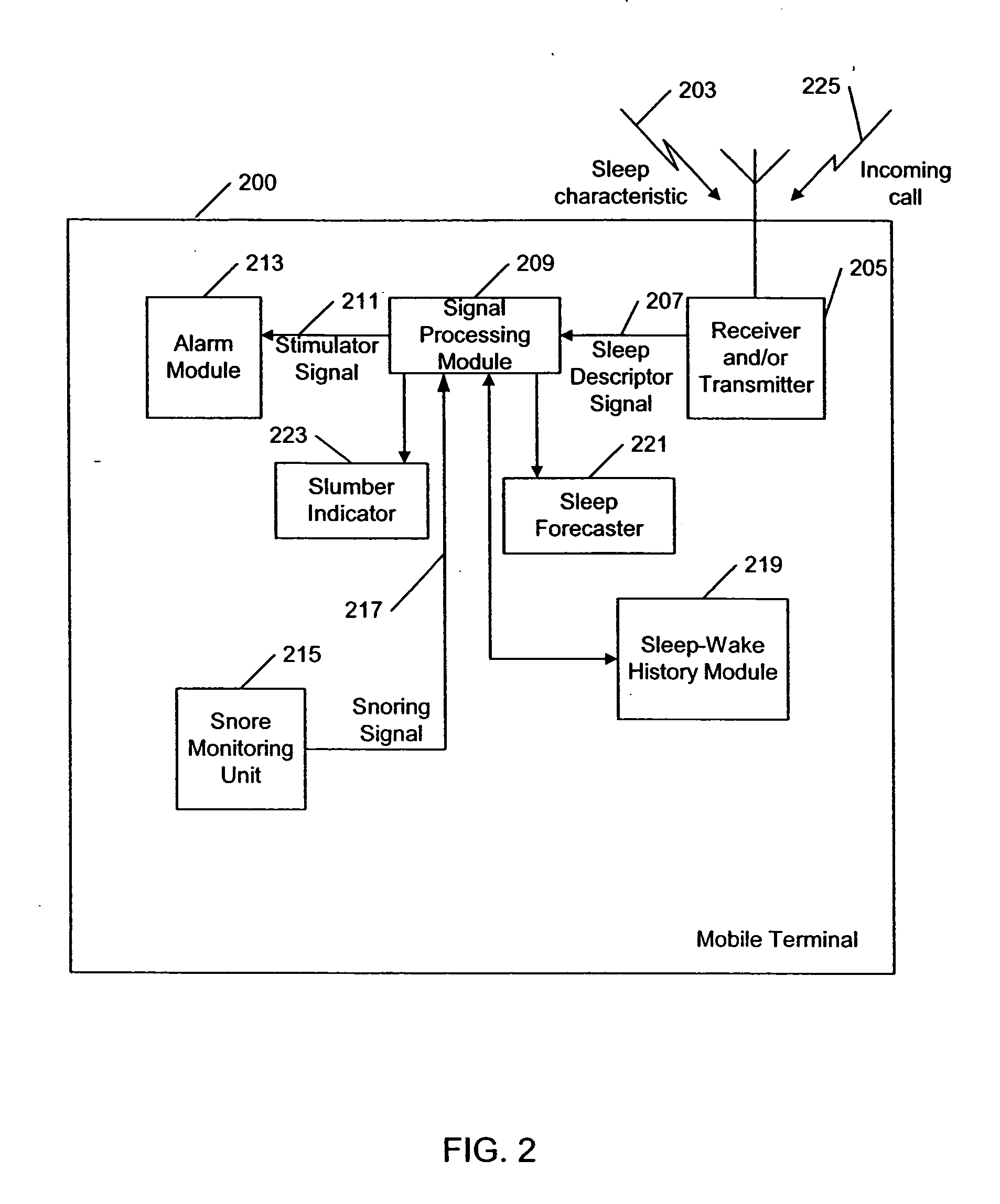Natural alarm clock
a technology of alarm clock and natural clock body, which is applied in the field of mobile communication devices, can solve the problems of not suggesting a sufficiently movable natural alarm clock, not suggesting solving the problem by using the capacity of a mobile terminal to reduce the bulk (and cost) of other parts, and achieve the effects of preventing the user from going to sleep, preventing the user from sinking, and keeping out nois
- Summary
- Abstract
- Description
- Claims
- Application Information
AI Technical Summary
Benefits of technology
Problems solved by technology
Method used
Image
Examples
Embodiment Construction
[0032] There are four basic sleep stages during NREM, as illustrated in FIG. 1(a) which will be referred to more extensively later in this specification. Stage 1 sleep is a transitional phase between wakefulness and sleep or between REM sleep and deeper NREM sleep. Brain waves become smaller and slower. In this stage, a person is still easily awakened and might even deny having slept. Stage 2 sleep is a deeper, intermediate stage of sleep and occupies about 50 per cent of an adult's sleep pattern. In this stage, blood pressure, metabolism and cardiac activity decrease. Brain waves are larger with occasional bursts of activity. A person will not see anything even if the eyes are opened, however, can easily be awakened by sound. Stage 3 sleep is the beginning of deep sleep and is characterized by delta waves—slow brain waves which are about five times the size of brain wave patterns in stage 2 sleep. A person will be far more difficult to awaken during this stage. Stage 4 sleep is whe...
PUM
 Login to View More
Login to View More Abstract
Description
Claims
Application Information
 Login to View More
Login to View More - R&D
- Intellectual Property
- Life Sciences
- Materials
- Tech Scout
- Unparalleled Data Quality
- Higher Quality Content
- 60% Fewer Hallucinations
Browse by: Latest US Patents, China's latest patents, Technical Efficacy Thesaurus, Application Domain, Technology Topic, Popular Technical Reports.
© 2025 PatSnap. All rights reserved.Legal|Privacy policy|Modern Slavery Act Transparency Statement|Sitemap|About US| Contact US: help@patsnap.com



